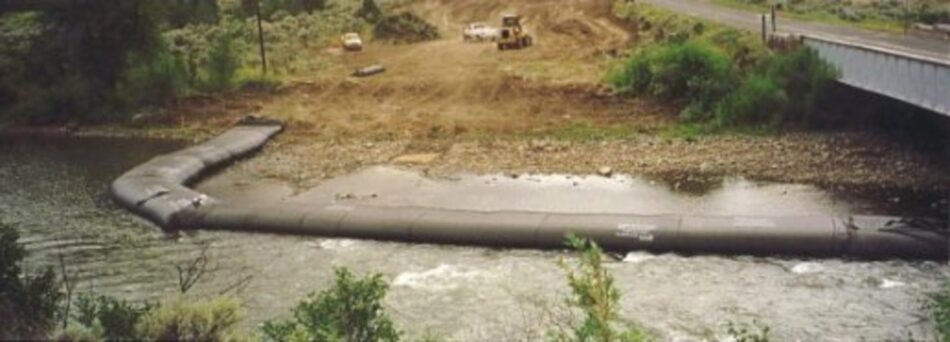
1.) The Wyoming Department of Transportation and the Federal Highway Administration needed to construct a new bridge pier across the Shoshone River, 13 miles East of the main entrance to Yellowstone National Park. Water quality was a top priority.
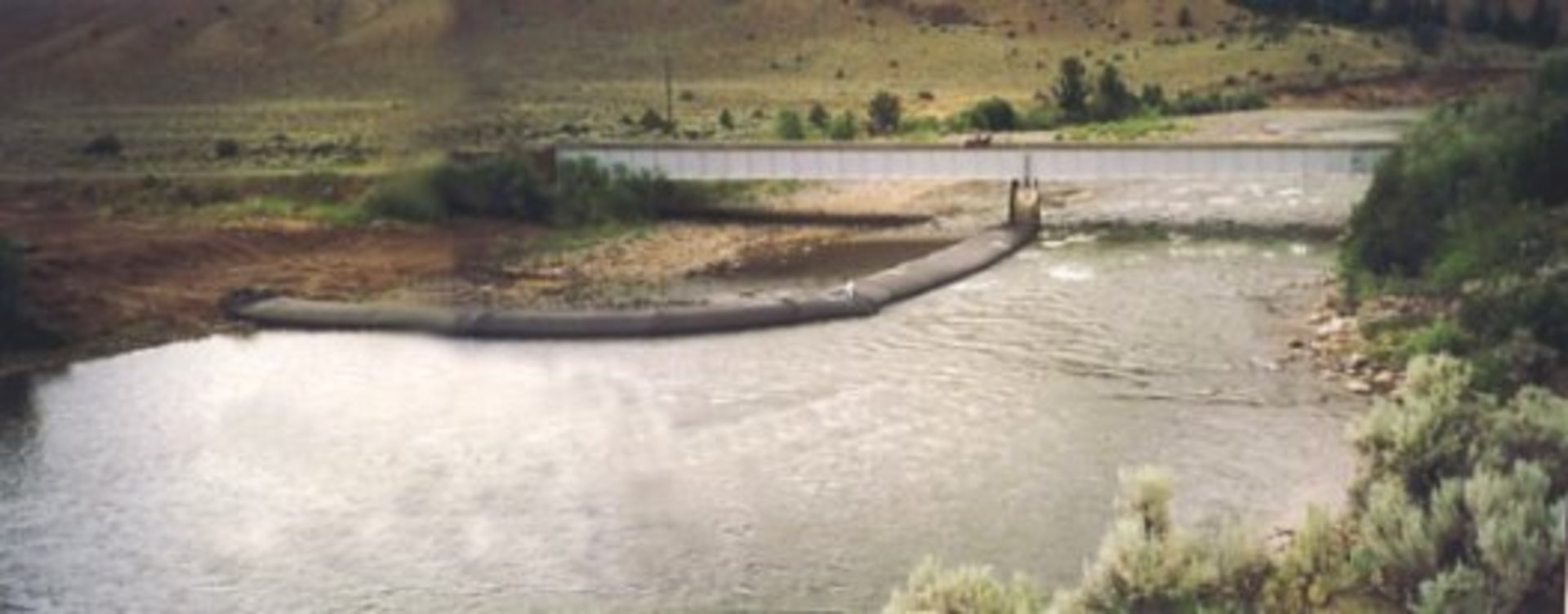
2.) Two 4ft x 100ft AquaDams were used to isolate the work area. Since the amount of fall in the river is so great, the work area did not have to be completely enclosed. Excess water merely drained off. The first AquaDam was bent to curve around the work area creating a “L” shape configuration. The excavated hole had to be kept de-watered using a pump.
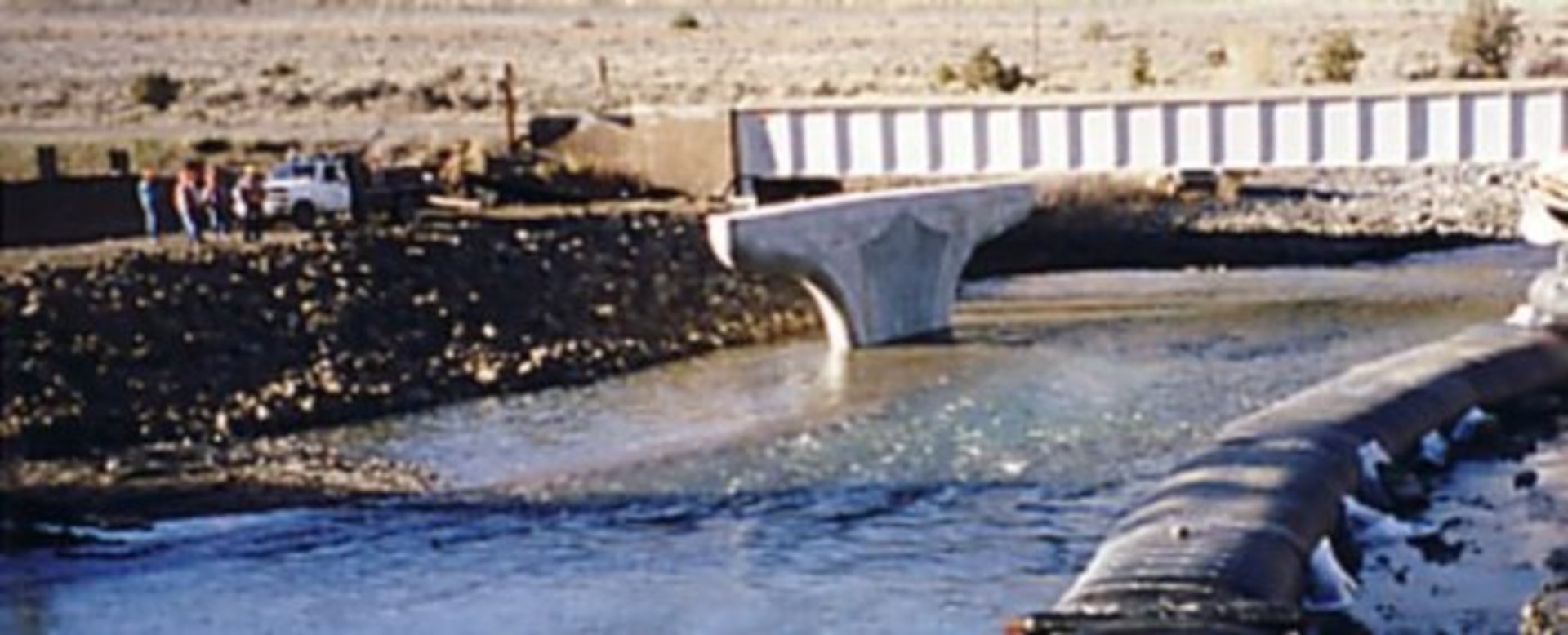
3.) This is a view of the completed bridge pier after the AquaDams had been removed. The same AquaDams were used to de-water the other side of the river too.
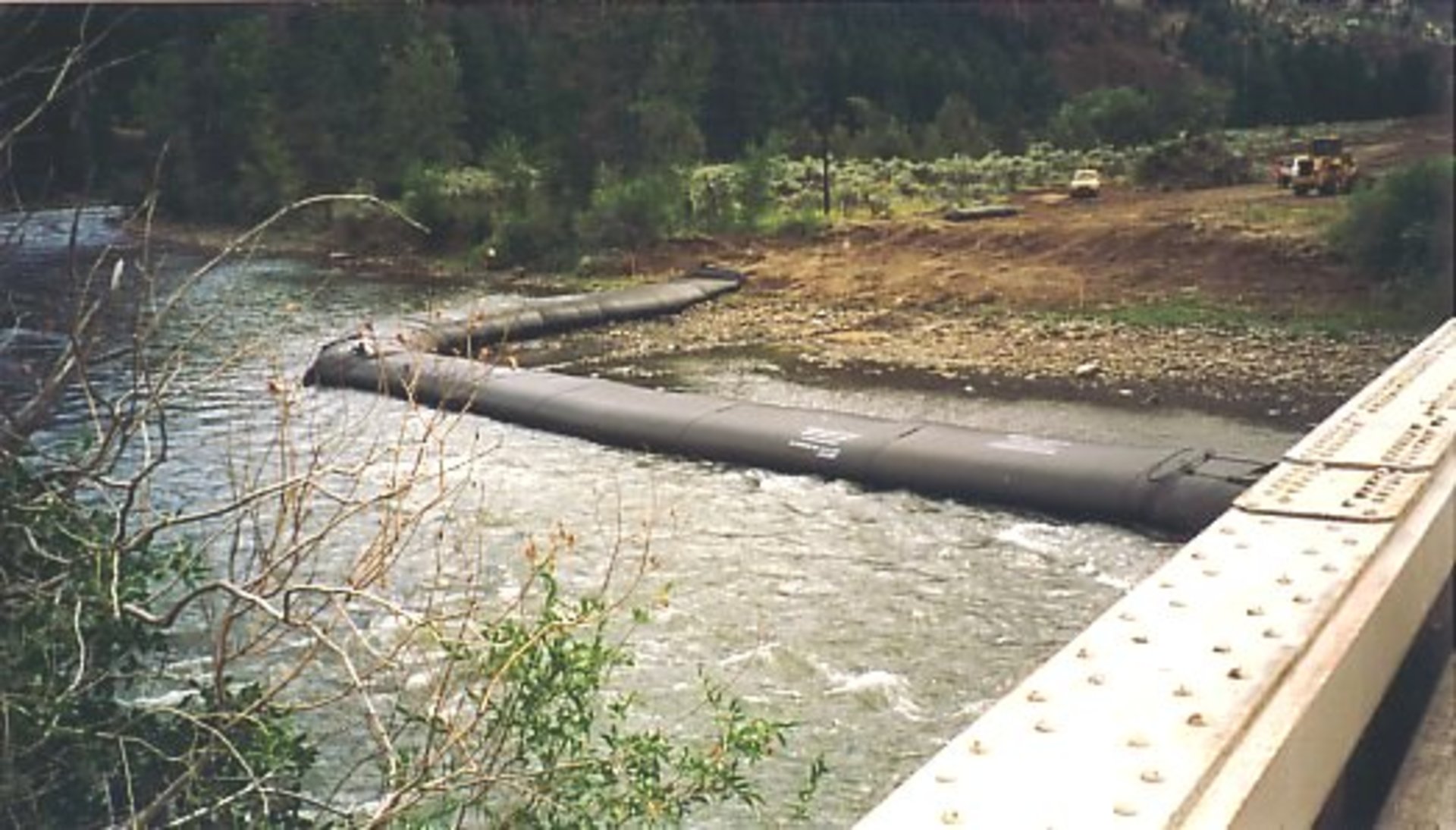
4.) The water is moving fast due to the construction in the stream bed and the rapid drop in elevation. A great amount of time was spent rock-picking directly in the path of the unrolling AquaDam to ensure that the best possible watertight seal would be formed. AquaDams can seal remarkably well even over rocky terrain.
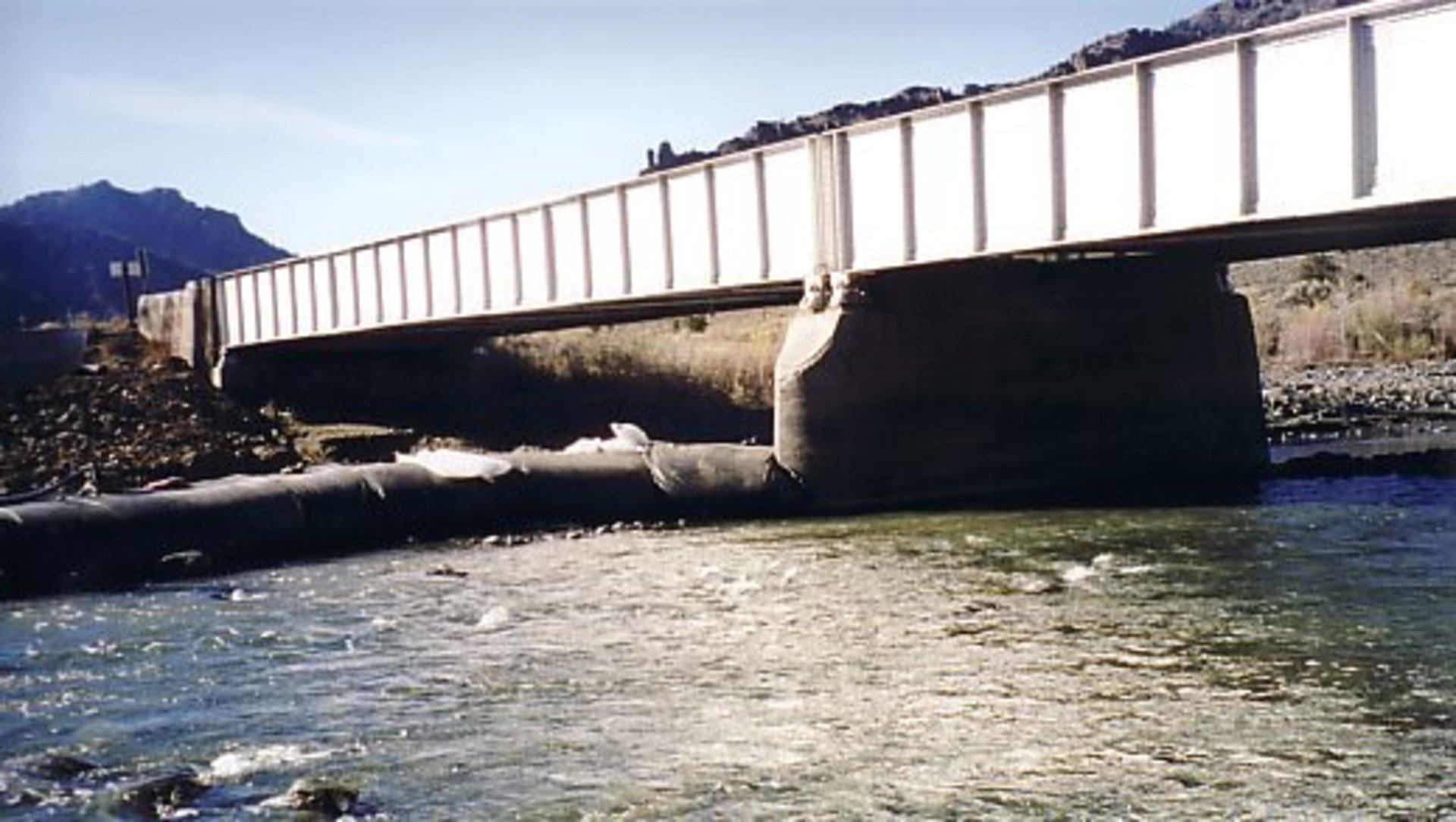
5.) A small 20ft closed-ended AquaDam was attached to the end of the second 4ft x 100ft unit to close off the gap between it and the bridge pier.
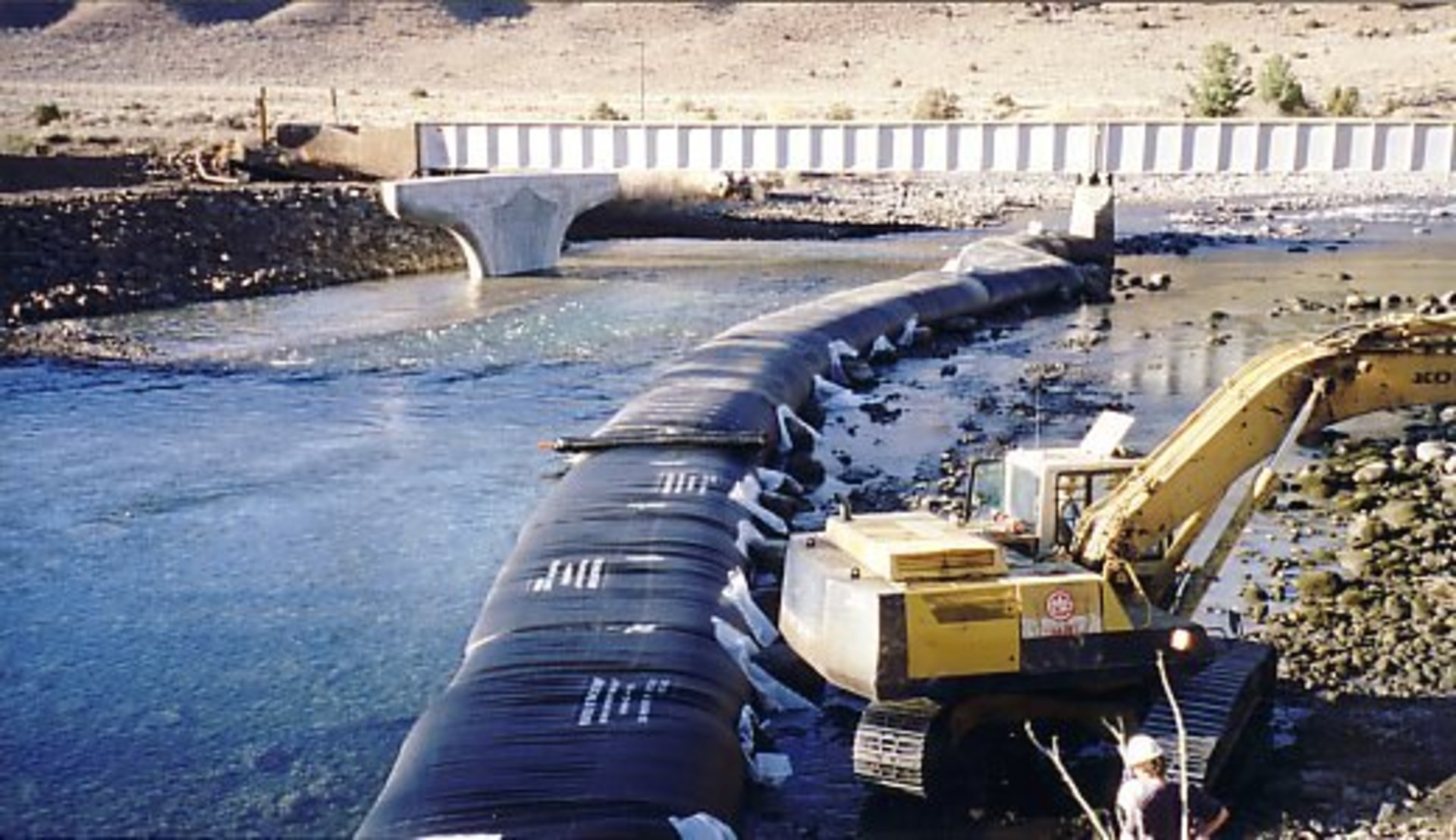
6.) Once the first concrete bridge pier was completed, the AquaDam was drained, re-rolled, moved to the other side of the river and the process was repeated. One dam was started from the middle bridge pier and extended upstream, while the second dam was started upstream on the bank and ran downstream.
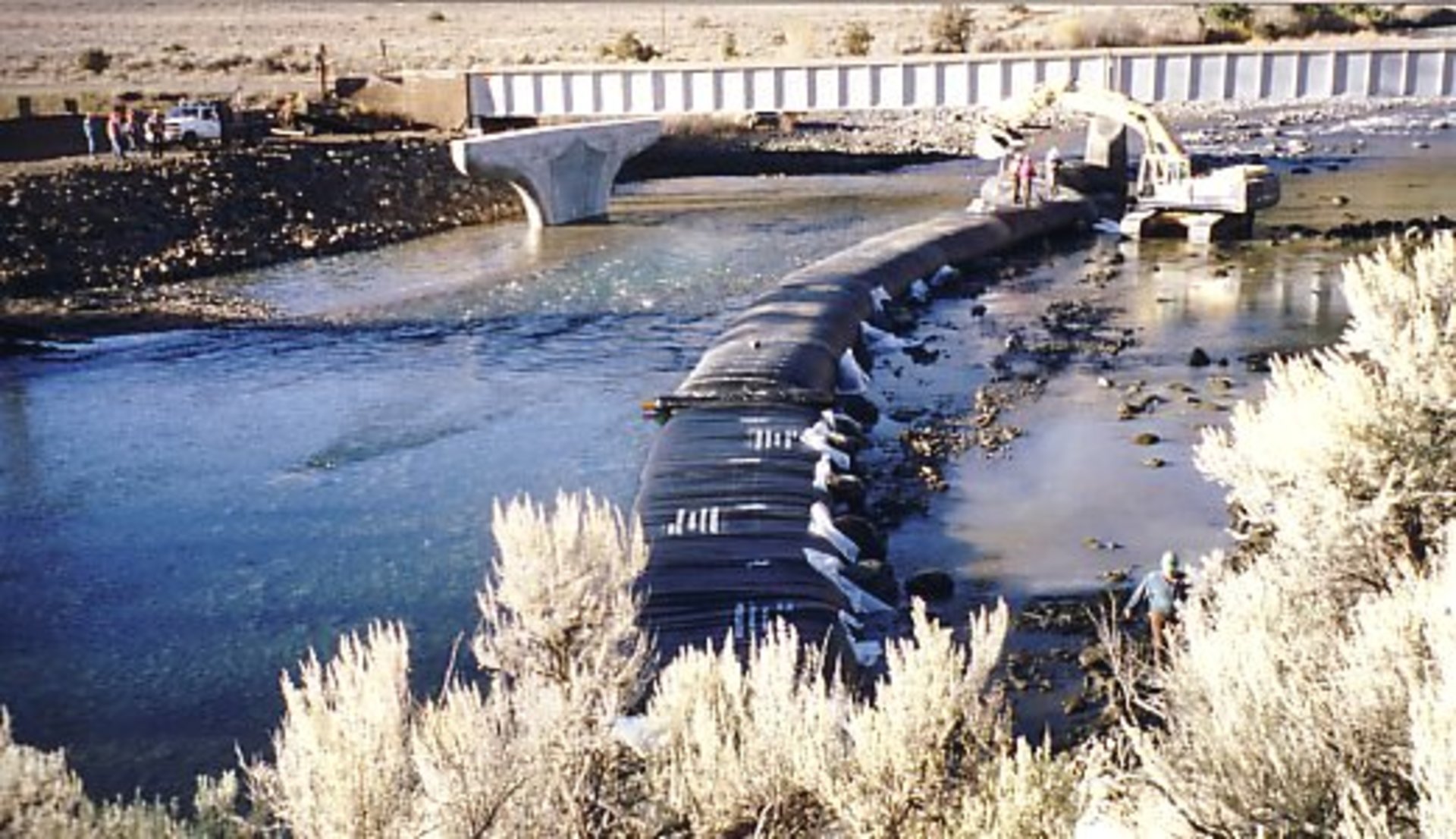
7.) The flow has been forced around the work area to the opposite side of Shoshone River. The turbidity caused by the excavator does not move off site because there is no flowing water.
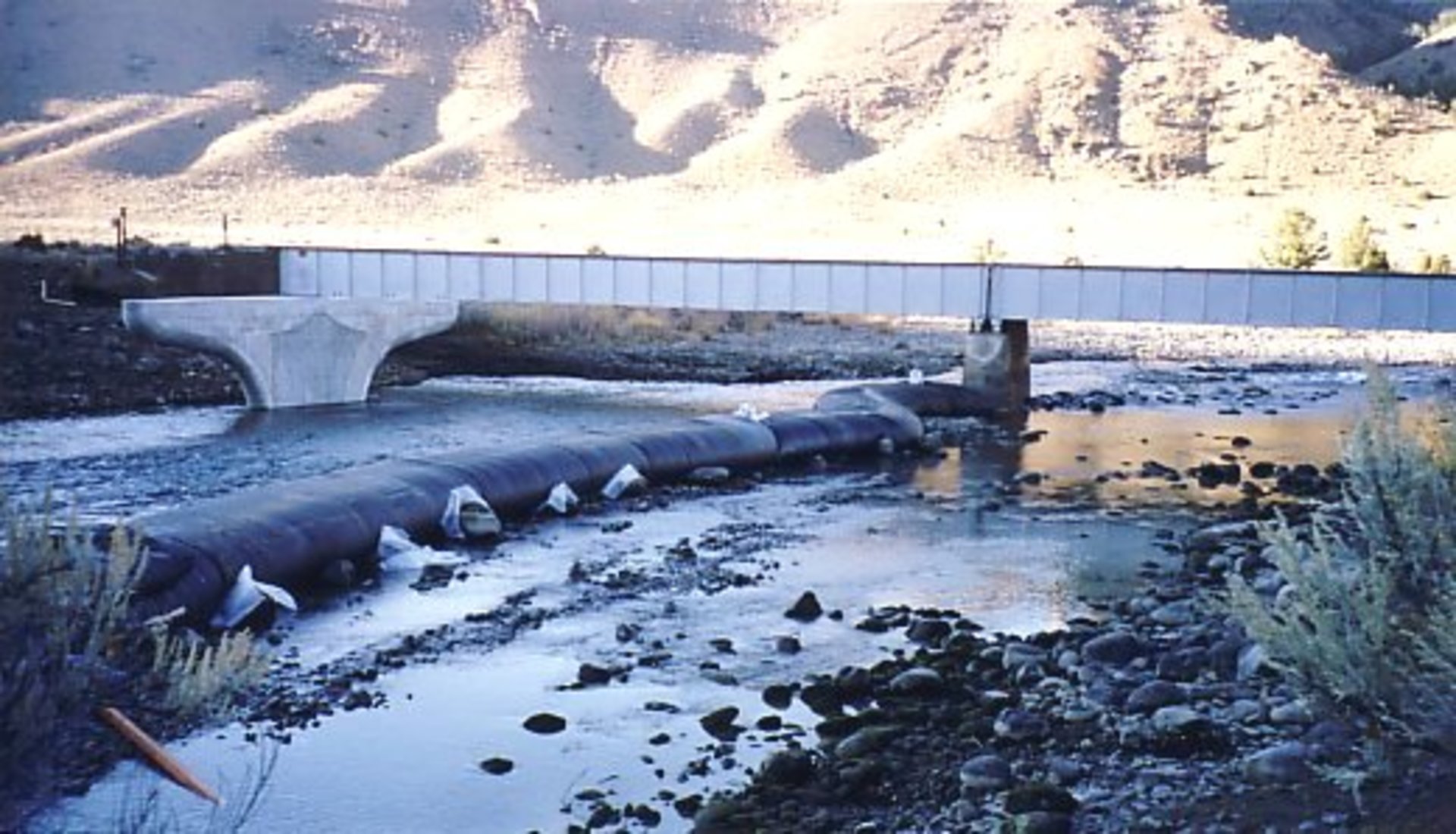
8.) Notice the small pieces of plastic along the side of the AquaDam. They were put in place so that large stones could be used to help back up the AquaDam without having to worry about sharp points.
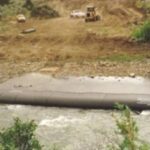
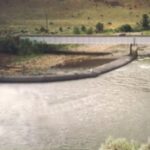
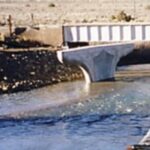
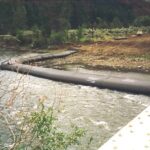

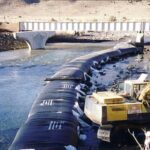
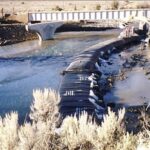
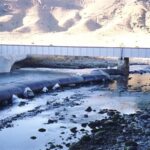
Two 4ft Tall 9ft Wide (full) 100ft Long AquaDams, Bridge Pier Construction, Shoshone River, “L” Shape Configuration
